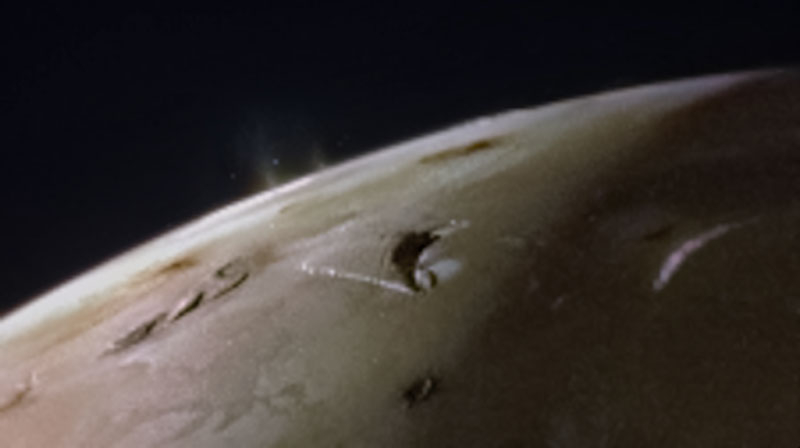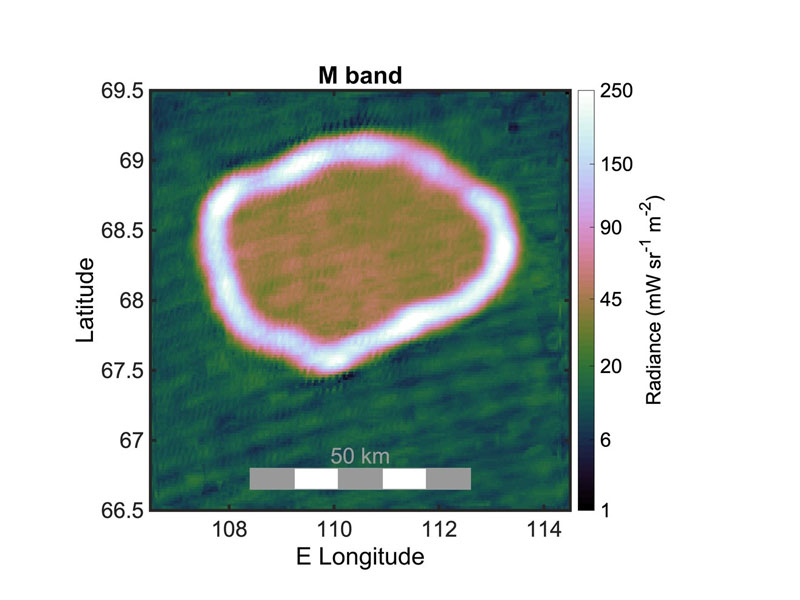The Italian infrared instrument Juno Jovian Infrared Auroral Mapper (JIRAM) on the Juno probe has become a valuable tool for studying Jupiter’s moon Io. Io is the most volcanically active body in the solar system, with hundreds of volcanoes. Juno’s close flybys allow close-up views of lava lakes and their general structure, giving insight into the processes in the depths of this Jovian moon.

Volcanic plumes on Io. Image Credit: NASA/JPL-Caltech
Scientists are just beginning to sort through the data from NASA’s close flybys of Io last year. But scientific analysis is not something to be taken lightly. The first paper on the data was published a few days ago in the journal Nature. JIRAM was designed to study Jupiter’s atmosphere down to 70 km below the giant planet’s cloud cover. But it has also become an excellent tool for studying Jupiter’s moons, the most striking of which is Io.
Based on JIRAM data on lava lakes discovered on Io, these formations on the satellite are multiple and quite local. Magma does not spill over the edges of the caldera, from which scientists conclude that the crater walls are quite high – up to several hundred meters.

Lava lake detected by JIRAM instrument
An interesting and not fully understood feature of Io’s lava lakes is the distinct absence of solidified magmatic crust along their edges. This suggests either probable circulation of magma from the center to the edges and into the craters, or conditions along the edges in which the solidified crust breaks off from the edge and exposes a lava ring. This provides some clues about the behavior of magma in Io’s interior, but they are not enough to draw a final conclusion.
Scientists continue to collect data on Io. Juno completed its 62nd flyby of Jupiter on June 13. It passed the moon at an altitude of 29,250 km. The probe will complete its 63rd flyby of Jupiter and Io on July 16. The spacecraft was able to pass over the moon’s north and south poles, which will allow it to obtain data on Io’s volcanic activity in the polar regions for the first time.
